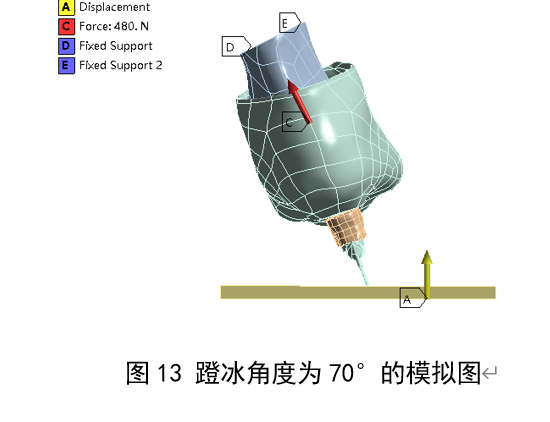Using the quasi-static analysis of ANSYS WORKBENCH 20 R2 software, after the pre-processing of the model is completed, the relevant settings such as load solution are started, mainly including the application of loads and constraints, and the setting of solution items. The specific loading method is as follows: first, set the constraint load to constrain the front and rear, left and right, up and down displacement of the upper plane of the tibia and fibula; Secondly, load the Achilles tendon force, which is 50% of the load on the foot. When standing, the vertical ground reaction force is one time of the body weight, so the ground reaction force of the right foot in this study is set to be half of the body weight, 320N, and the Achilles tendon force is 160N; Finally, load the displacement load, and the ground reaction force moves vertically upward through the ice surface. After many tests, find the specific distance between the ice surface moving upward and the ground reaction force (320N), and constrain the horizontal and front and rear directions of the ice surface. The friction coefficient between the ice skate and the ground is 0.6.






















